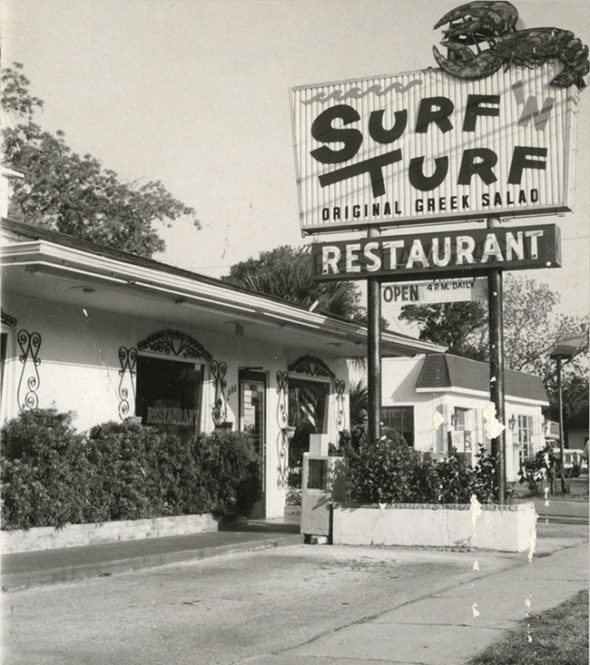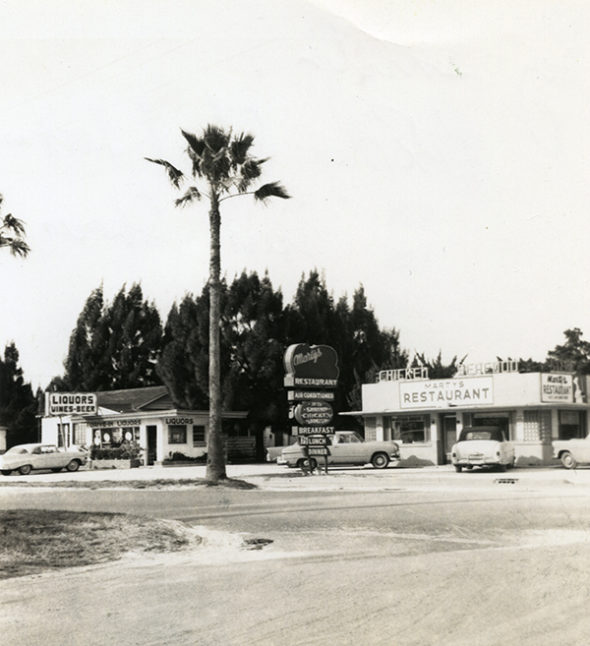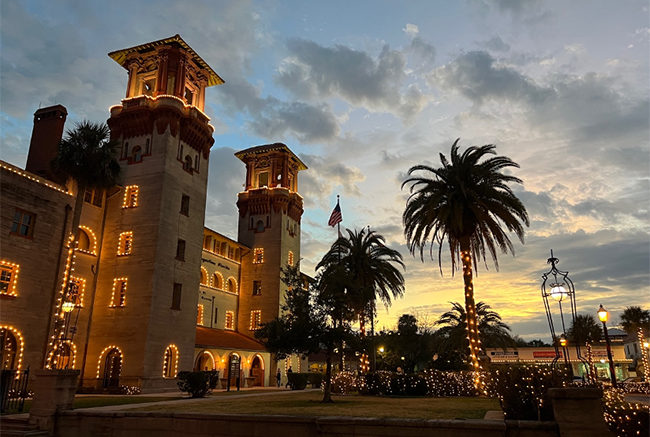By Presleigh Johnson
Public History is everywhere. Whether it’s signs all over St. Augustine, reenactments, or surf culture exhibits, the Oldest City is a treasure trove of history. Being a Flagler College student is one of the best ways to learn about the St. Augustine community.
Every time I visit a new place, I always try to find fun restaurants. It might be because I’m a bit of a foodie, or because I want to enjoy what seems like an authentic experience from somewhere I’ve never been before.
Food is a way into understanding people and places, which is perhaps why I’m so interested in good restaurants that seem to speak for a region’s culture. Like most tourists, many of my travel stories revolve around food—both the good and bad experiences. There’s nothing more fun than stumbling on a cannoli place in Boston or eating a Hot Brown in Louisville. Nothing could top the experience at that pub somewhere in London with its strange barbecue wings.
But I’m not the only one who’s interested in cute restaurants and seemingly authentic cuisine. When you google, “St. Augustine Restaurants,” you see articles like “10 Places Where Locals Love to Eat in St. Augustine” from Hotels.com or OpenTable’s “Best Overall Restaurants in St. Augustine.” When we travel somewhere, we’re after the best food, the best experience, and the most fun memories.
After writing my column on menus at the Hotel Ponce de Leon, I started wondering, “What were some popular restaurants in St. Augustine that are no longer here?” When I asked a local, I immediately heard stories of the original fried shrimp place and a long-lost fancy French bakery. Two students told me about a faded restaurant sign they’d seen on a building off U.S. 1. From there, I discovered that St. Augustine has had quite a collection of restaurants that many modern tourists probably don’t know existed.
There were so many options of restaurant postcards and photographs, I decided to include some honorable mentions for this forgotten food tour of St. Augustine. First up: Capt. Jack’s Restaurant capitalized on a nautical theme, serving up seafood and steaks with “travel and historical information given on request.” Living in a tourist town, restaurant owners were expected to possess knowledge about their community’s history. The Oldest City’s history could even be learned over a meal at Capt. Jack’s.

(Photo Courtesy of the St. Augustine Historical Society)
Another restaurant, the Neptune Restaurant, included erroneous history on its postcard, advertising, “Romantic Saint Augustine, FLA. ‘Where Ponce de Leon landed in 1513.’ Temperatures the year ‘round mean average 70.2 degrees.” (Yeah, because that’s so not true).
There was the Chimes Restaurant, established in 1927, located across the street from the Castillo de San Marcos. The long-running restaurant served steak, seafood, and cocktails—what seems to have been a lucrative combination.

(Photo Courtesy of the St. Augustine Historical Society)
Also near the Castillo, Old China Town Restaurant served seafood, cocktails, and steaks as well as $1.25 lunch specials…so no Chinese food apparently?

(Photo Courtesy of the St. Augustine Historical Society)
Next stop is Surf ‘n Turf Restaurant on San Marco Avenue and it’s my favorite on the tour because of the kitschy, midcentury sign. They claimed to have the “Original Greek Salad” on the menu.

(Photo Courtesy of the St. Augustine Historical Society)
Leaving downtown, the Sea Fair Restaurant had “famous Salad Dressing” and “delicious Garlic Cheese on sale at the Cashier’s Counter,” at least according to the postcard. They only served “Western Meats—Roast Prime Ribs, Beef, Steak and Chops daily” in addition to their seafood selection. Oh, and we can’t forget that it was “air-conditioned.” During a hot St. Augustine summer, tourists could take refuge in good food and a variety of meats.

(Photo Courtesy of the St. Augustine Historical Society)
Marty’s Restaurant on Anastasia Boulevard offered more variety: shrimp, chicken, lobster, breakfast, lunch, and dinner. It was located near the beach and the road was left unpaved. I wonder what it must have been like in the 1950s to leave the beach, then park in a sandy lot because you spotted an authentic seafood place.

(Photo Courtesy of the St. Augustine Historical Society)
While some of these restaurants overlapped years of operation, the theme binding them together is the city itself. St. Augustine restaurants in the mid-twentieth century catered to tourists’ expectations of a Florida vacation: fresh seafood, Spanish history, a coastal ambiance, and waterfront vistas. The restaurants reflected a growing statewide culture and cuisine.
Marty’s Restaurant marks the end of my food tour, but it could go on because there’s no shortage of bygone restaurants and I barely scratched the surface of the St. Augustine Historical Society’s archives. As primary sources, restaurants answer questions public historians ask, such as: What were people eating? What businesses occupied different buildings? Where did people dine? Importantly, who were able to own businesses in the community?
It’s hard to look at these photographs and not imagine what we would have ordered some seventy years ago. Restaurants are repositories, keeping alive cultures, stories, and recipes while fueling generations of tourists and locals. When restaurants close their doors, we lose the stories of those who dined and worked there.
Every defunct restaurant had a story to tell and it’s a shame that so many have disappeared, taking their stories with them. Next time you eat at your favorite restaurant, take a picture of its interior or its menu. You never know when that photograph might end up in a textbook or a column like mine.
A Forgotten Food Tour of St. Augustine
- Capt. Jack’s Restaurant, 10 Marine St.
- The Neptune Restaurant
- The Chimes Restaurant, 12 Avenida Menendez
- Old China Town Restaurant, corner of Hypolita Street and Avenida Menendez
- Surf ‘n Turf Restaurant, 123 San Marco Blvd.
- The Sea Fair Restaurant, 1 Anastasia Blvd.
- Marty’s Restaurant, 320 Anastasia Blvd.
Browse through more forgotten restaurants on the St. Augustine Historical Society’s database here.




Be the first to comment on "A Forgotten Food Tour of St. Augustine"